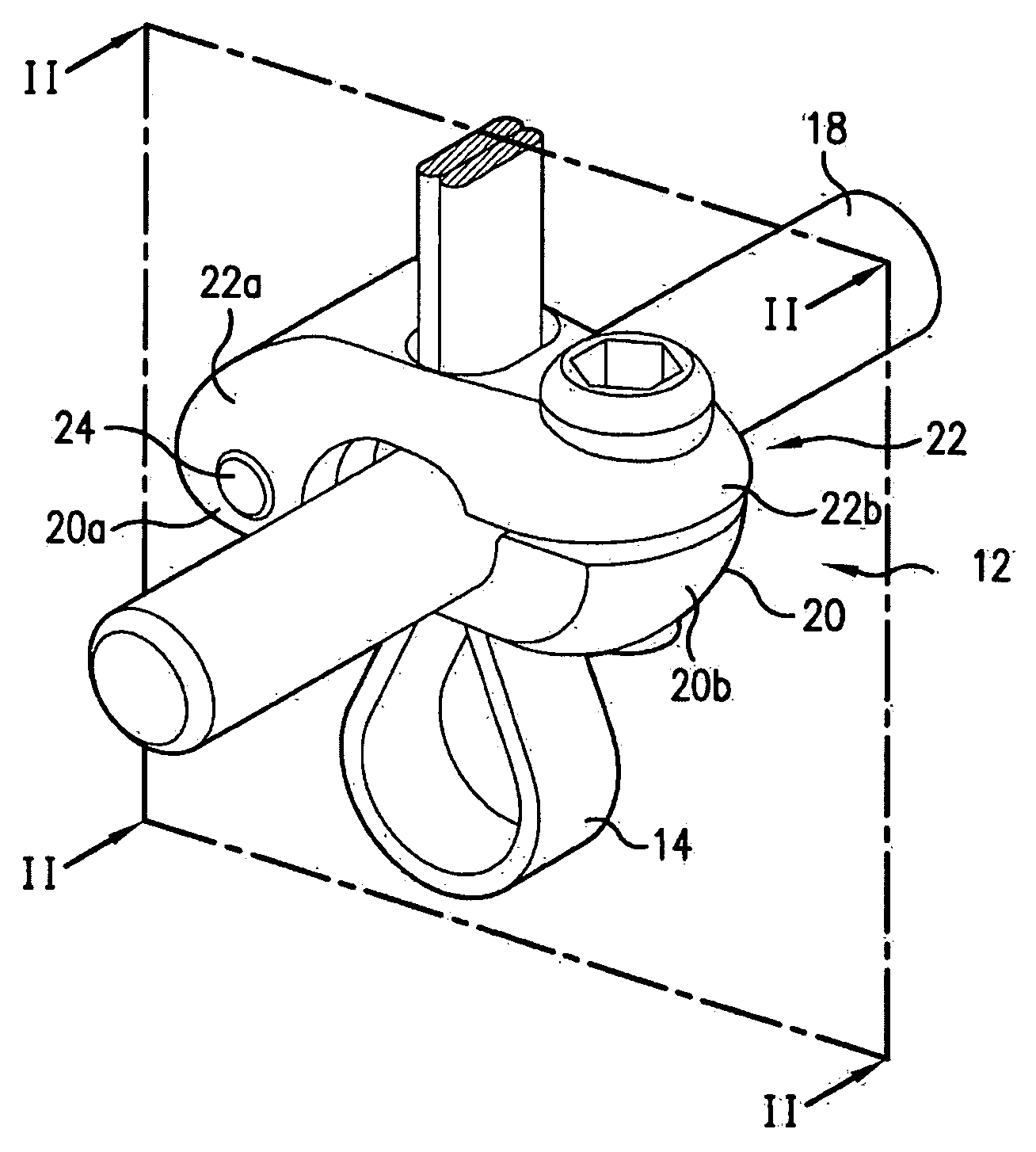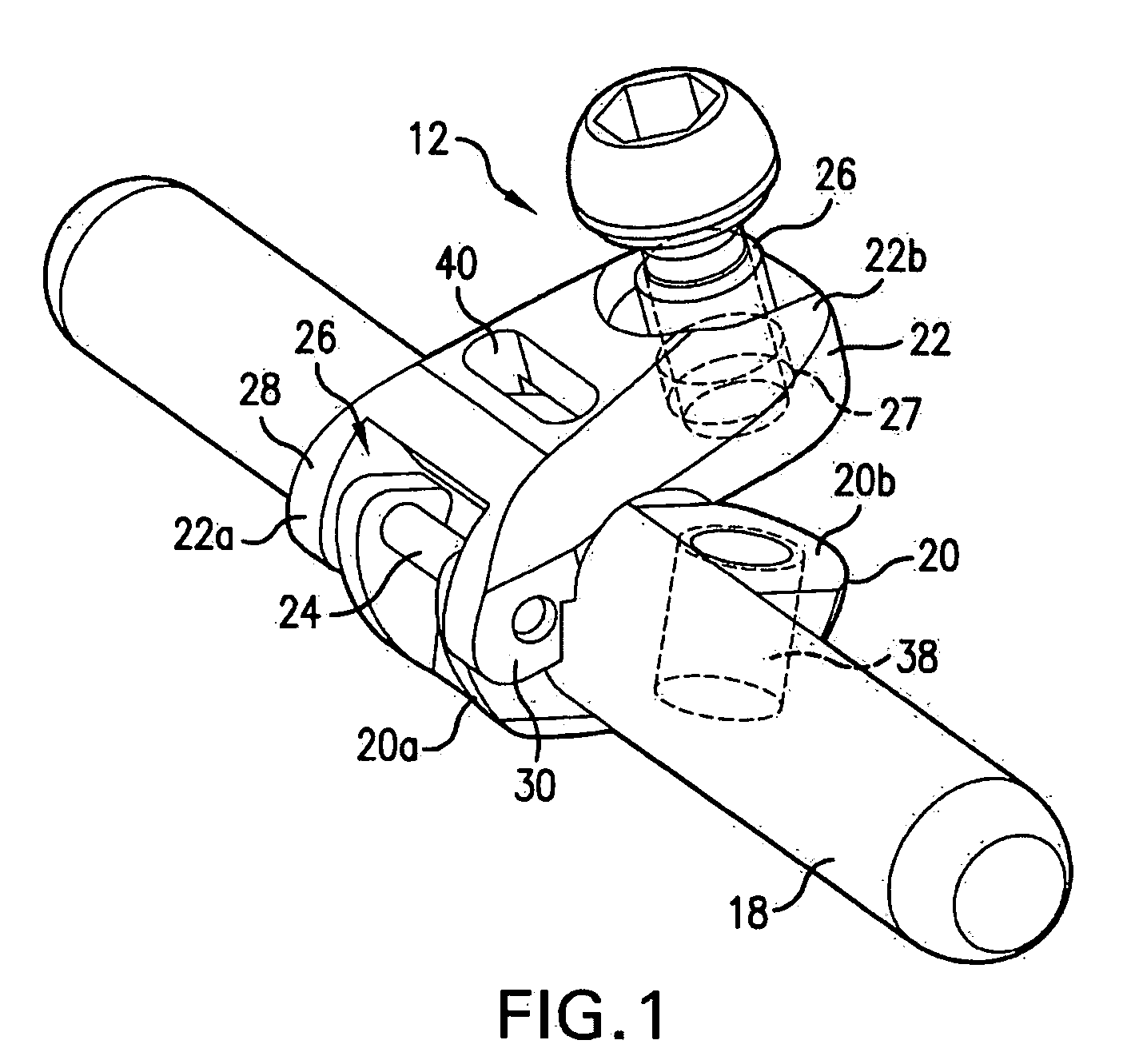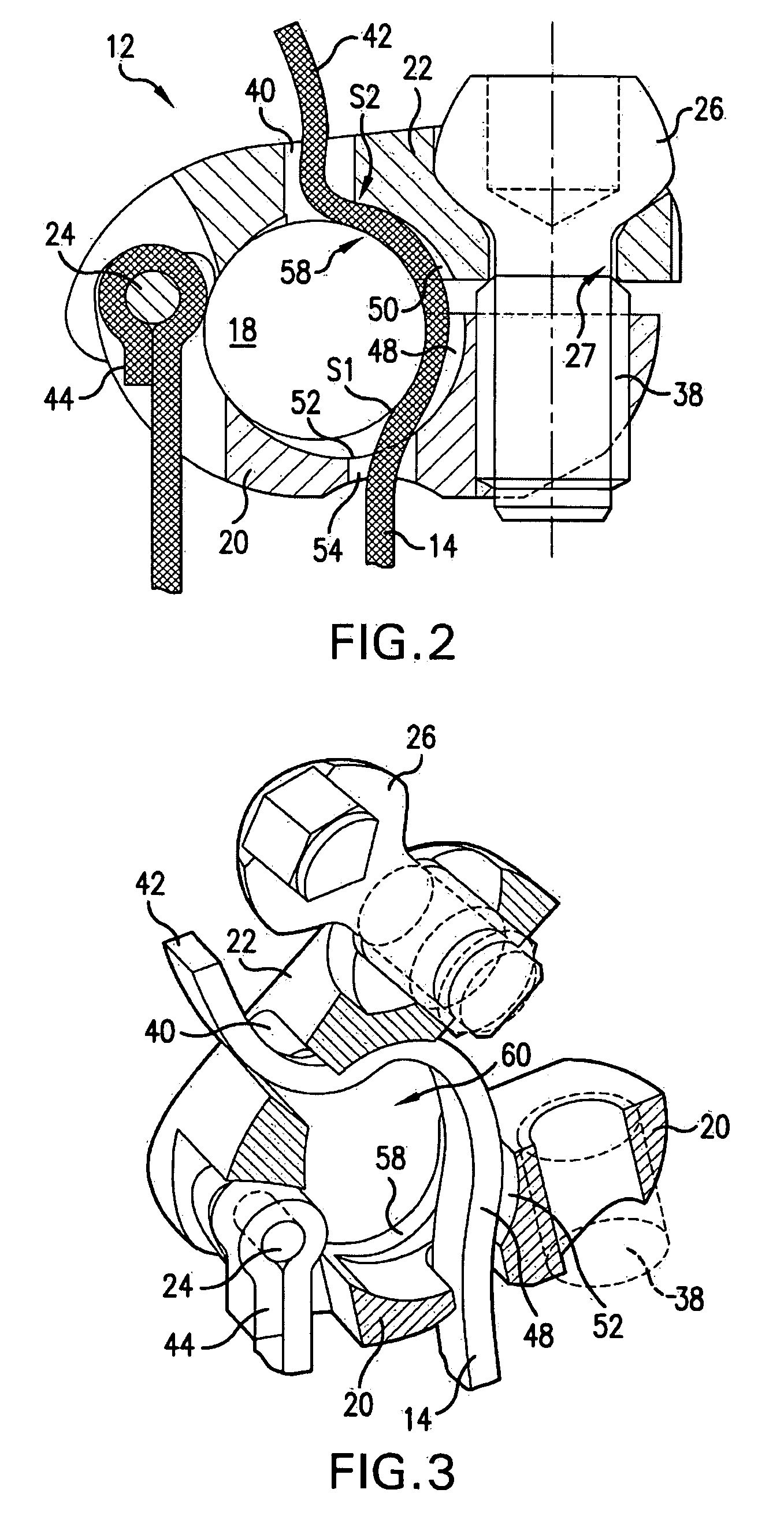Bone fixation tensioning tool and method
a technology of fixing tools and tools, applied in the field of bone fixation tensioning tools and methods, can solve the problems of insufficient purchase, difficulty in using such hooks, paralysis of patients, etc., and achieve the effect of progressively reducing the tension of the ligature and being easily controlled
- Summary
- Abstract
- Description
- Claims
- Application Information
AI Technical Summary
Benefits of technology
Problems solved by technology
Method used
Image
Examples
first embodiment
[0074]In some embodiments, flexible ligature 14 may not be ligated around pin 24 or otherwise fixed to connecting part 12. As shown in FIG. 5, in one embodiment, a vertebral fixing system comprises a connecting part 12, a flexible ligature 14, and adjustable locking means 16. The flexible ligature 14 is of elongate shape and is capable of matching the outline of the parts it is to connect together. In this figure, there can also be seen the rod 18 that is to be secured to the vertebra by means of the vertebral fixing system. In the first embodiment, the connecting part 12 is constituted by two longitudinal elements given respective references 22 and 20, each having a first end 22a, 20a and a second end 22b, 20b.
[0075]In FIG. 6A, the longitudinal elements 22 and 20 are hinged to each other at their second ends 22b, 20b about a pivot pin 24.
[0076]In the embodiment described, the locking means are constituted by a screw 26 having a head 26a that is engaged in a bore 28 formed in the f...
second embodiment
[0087]With references to FIGS. 12, 13A, and 13B, there follows a description of two different ways of putting the flexible ligature 14 into place inside the connecting part 12 in the The side wall of the rod 18 and the inside wall of the recess 58 of the part 55 potentially define two passageways 74 and 76 for passing the middle strands of the flexible ligature 14. In the configuration shown in FIG. 13A, only the passageway 74 is used. Thus, both intermediate portions 42 and 44 of the flexible ligature 14 are disposed in the passage 74.
[0088]In the configuration shown in FIG. 13B, the middle portions 42 and 44 of the flexible ligature 14 are disposed respectively one in each of the passageways 74 and 76, i.e. on either side of the rod 18. Advantageously, the free ends of the ligature 14 are accessible for exerting the desired traction in order to obtain suitable clamping on the spinous process prior to locking the clamping ring 62 on the part 55.
[0089]One advantage to this type of ...
PUM
 Login to View More
Login to View More Abstract
Description
Claims
Application Information
 Login to View More
Login to View More - R&D
- Intellectual Property
- Life Sciences
- Materials
- Tech Scout
- Unparalleled Data Quality
- Higher Quality Content
- 60% Fewer Hallucinations
Browse by: Latest US Patents, China's latest patents, Technical Efficacy Thesaurus, Application Domain, Technology Topic, Popular Technical Reports.
© 2025 PatSnap. All rights reserved.Legal|Privacy policy|Modern Slavery Act Transparency Statement|Sitemap|About US| Contact US: help@patsnap.com



